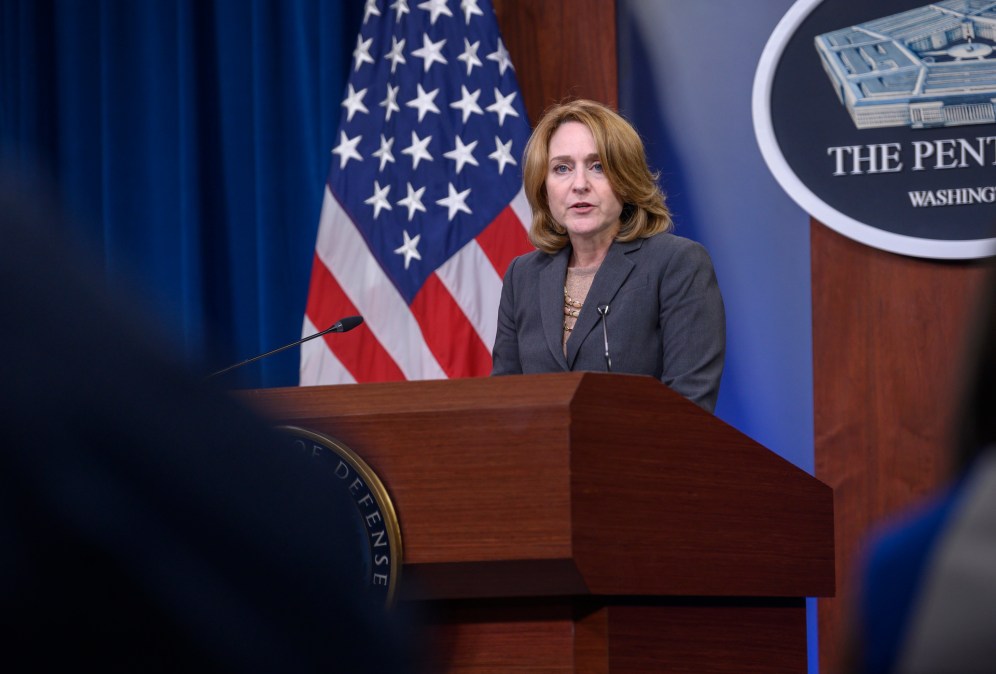Hicks says Pentagon moving too slowly in transitioning DARPA tech to warfighters

The Defense Advanced Research Projects Agency has done a great job developing cutting-edge technology — but the Pentagon and its innovation partners need to get better at transitioning promising capabilities from the lab to the battlefield, Deputy Defense Secretary Kathleen Hicks said Wednesday.
Since its inception, DARPA has played a critical role in ushering in game-changing technology such as the internet, stealth, precision-guided munitions, handheld GPS, and vaccine platforms that use mRNA technology, among others. But some of those innovations took longer for the military to field than new capabilities should going forward, according to Hicks.
“Think about stealth aircraft, for example. If you compare when DARPA initiated the project that led to the first experimental stealth aircraft, ‘Have Blue,’ to when we fielded an operational F-117 Nighthawk — that took nearly a decade. It took another decade for stealth technology to be incorporated into an operational B-2 bomber — and another decade or two after that for stealth to be mainstreamed across much of our combat aircraft fleet, in the form of the F-22 and the F-35 stealth fighters,” she said during virtual remarks at the first “DARPA Forward” series of outreach events, which kicked off this week at the Colorado State University campus in Fort Collins, Colorado.
“Perhaps that timeline was tolerable in the Cold War, when our main strategic competitor was relatively lumbering and slow. But today, we have to evolve faster than the threats evolve,” Hicks continued. “Simply put, we don’t have decades to wait for the latest and greatest concepts and capabilities to proliferate across our military forces.”
The department needs to reduce the “lab-to-fab” timeline from decades to years or, in some cases, months, Hicks said.
In many cases, promising technologies never get fielded. The Pentagon has long struggled to overcome the so-called “valley of death” where innovations die on the vine before they ever make it into large-scale production.
“We’ve got to be thinking early and often about what happens after DARPA proves a concept and prototypes a capability — who carries the ball forward, and how,” Hicks said.
“The job doesn’t stop with prototyping and experimentation. More than ever before, we also have to think about what comes next, like how do we transition our most effective prototypes to become mainstream systems in the field? How do we take pockets of innovation and scale what they’re doing throughout the defense enterprise? It’s not that we can’t do this — we can, and we do — but it’s got to be easier, and it has got to be faster,” she said.
DARPA works on a wide range of technologies that could give the U.S. military a leg up in future conflicts. FedScoop asked Hicks which one was her top priority for the Defense Department.
“At the top of my list of challenges right now is making sure that we can increase speed of decision quality, and speed of decision and action. And there are a lot of different technologies that come together, a lot of different organizational innovations and operational concepts that come together to make that kind of command-and-control speed of decision improve,” she replied.
“Obviously cloud enterprise, cloud capability is a piece of that. AI and making sure we take best advantage of data, ensure we have quality data, [and] we do all of that in a responsible way — those are some of the technology areas I’m focused on to get to that operational end state,” Hicks continued.
Those capabilities will be key to DOD efforts to achieve leadership’s vision for its Joint All-Domain Command and Control initiative, which aims to enable commanders to make better and faster decisions by linking disparate U.S. military networks and deploying supporting capabilities such as artificial intelligence, among other things.




